How about a little bit of simple Stitch Fun! to start off the week?
With the voided floral monograms I’ve been working on lately – and the other floral filling I’m playing with on another sample – I’ve been fiddling a bit with how to take simple stitches just a notch upwards. In this case, I’m raising the daisy stitch.
This is a fun way to stitch a ring-like flower that has a little lift to it!
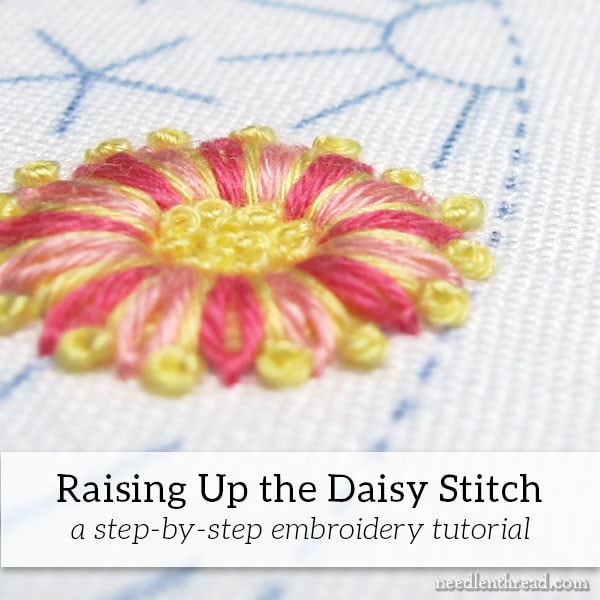
At a glance, if you’ve been stitching for a while, you probably know exactly what I’ve done with this ring to lift the daisy petals up.
This is not a difficult or intricate process, but it’s a good reminder that you can make just a few simple adjustments in your approach to the basic stitches, to give them a little bit more kick than they might usually enjoy!
So, with this particular piece, I’m working on a linen called Tailor’s Chalk (it’s available through fine needlework stores and online), which is rapidly becoming one of my favorite linen. It’s a fine linen, rather lightweight, with a beautiful hand, and perfect for surface embroidery.
The thread I’m using is cotton floche, but you can accomplish this with regular floss as well – just use two strands from the six.
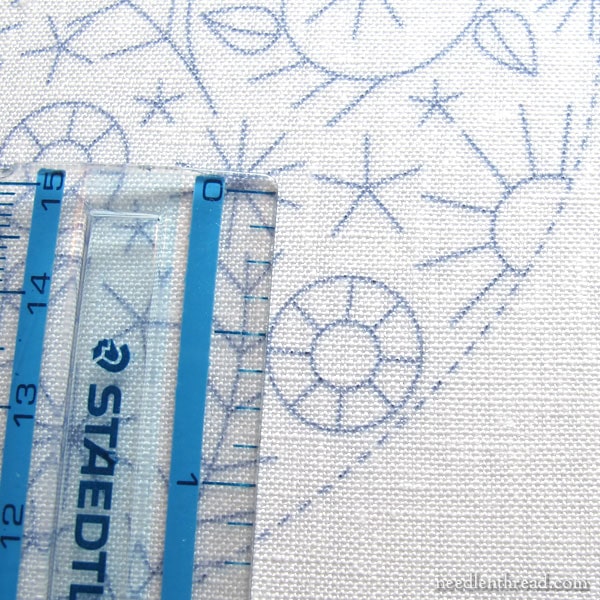
The ring that I’m stitching in this tutorial is approximately 1/2″ in diameter.
In fact, it’s bigger than I meant it to be. I need to shrink down the design I’m working with right now – I enlarged it as a test, but I’m not happy with the size. It seems almost gargantuan!
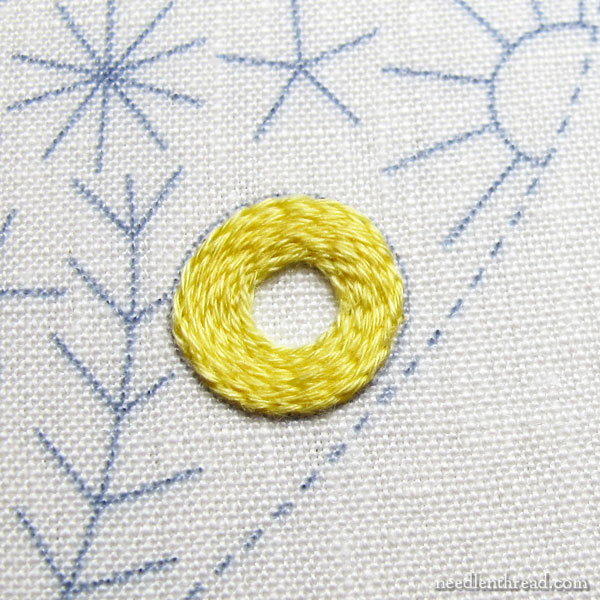
To pad the ring, I used split stitch.
You can use stem stitch – and it would probably work up quite a bit faster – but when I’m working with floche, I like split stitch. If you’re working with two strands of stranded cotton (floss), I’d probably just use stem stitch for the filled padding.
Pick a color that works with your whole scheme for your finished ring.
In this case, I was going for what I call the “pink lemonade” look, combining pinks and yellows. I like this combination when I’m working with cheery brights!
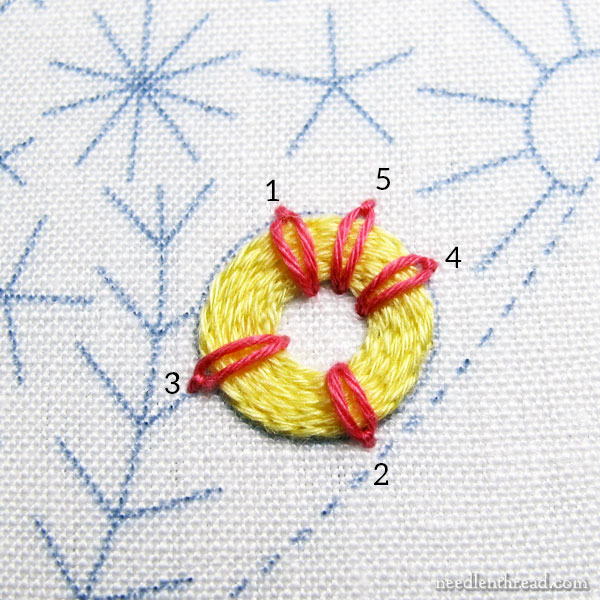
I’m using two alternating colors of pink for the petals. So I started with one color – the dark pink – and began stitching daisy stitch petals over the ring.
I worked them in the order shown in the photo above, kind of cutting up the ring into equal-enough proportions.
When working something round that is divided, I always find it easier to start with stitches laid out as if I’m cutting up a pie. Then, I go back and fill between them. It just helps keep the slant on the stitches correct and it helps me gauge spacing a little bit.
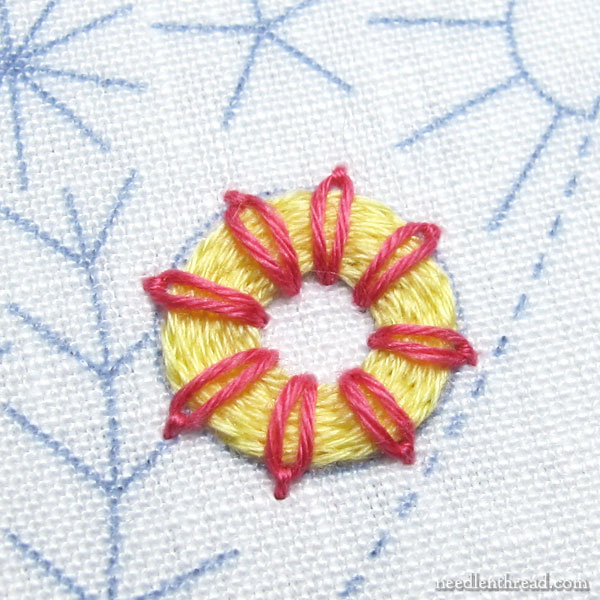
My spacing isn’t perfect, but it will work fine. You don’t have to obsess over spacing in a little element like this – as long as the spacing is “equal enough,” it’ll look just fine!
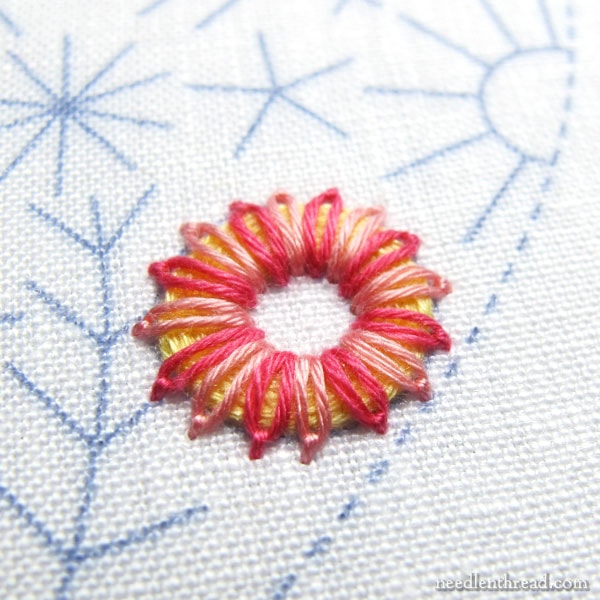
Once the first color of daisy stitch is finished, go back and fill between them with the second color, if you have a second color.
You want your daisy stitches to sit right up next to each other without looking tight and without overlapping.
Make sure that they extend just beyond the edge of your design circle, too, so that your design line is hidden by the embroidery.
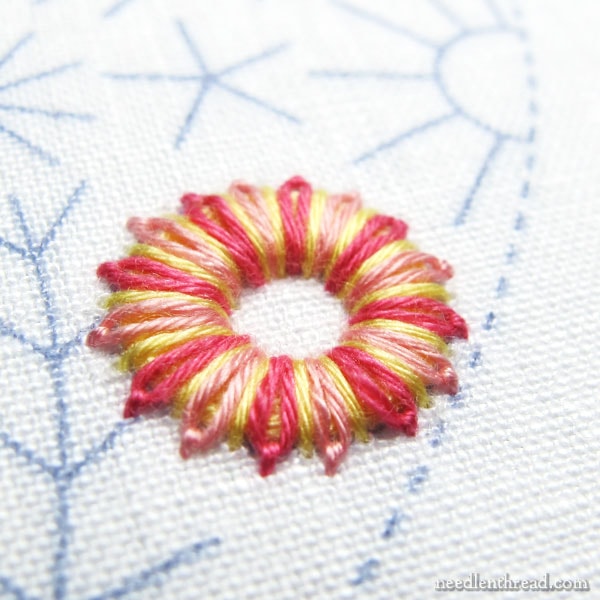
When I finished the alternating pinks, I wanted to pull the yellow a little more to the front again.
I had room to do this by working a long straight stitch between each petal. It would have been far too crowded to try to fit a whole daisy stitch in, but a single straight stitch worked great and helped bring the yellow back into a more prominent role.
At this point, the ring looks a lot like a piece of candy, doesn’t it? Yum! (Don’t worry, I didn’t lick it.)
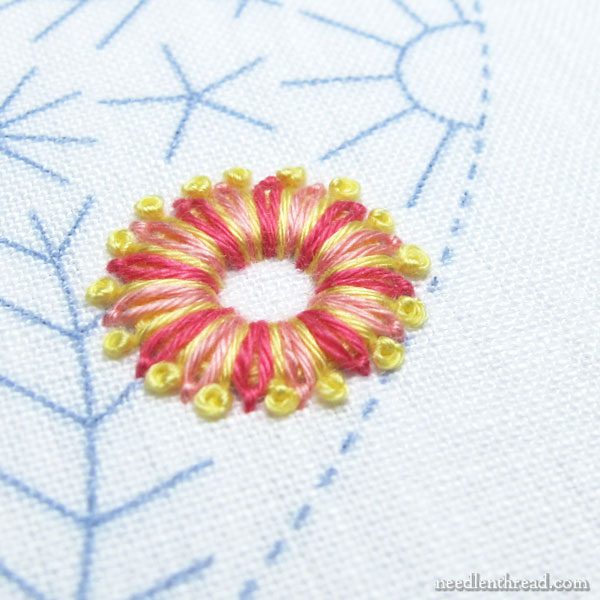
Time to add a little texture!
I tipped the yellow straight stitches with a French knot.
Now, you could just work a pistil stitch when you work the straight stitches in yellow – after all, it would eliminate the need to go back over and add the French knots.
The pistil stitch is essentially an elongated French knot – or a French knot with a long tail leading up to it. You can find a tutorial for it here.
But I’m not a huge fan of the sideways pull on the French knot that often results from the pistil stitch. So instead, I just work a separate French knot at the tip of my straight stitch, which gives me a much rounder knot in a normal orientation on the fabric.
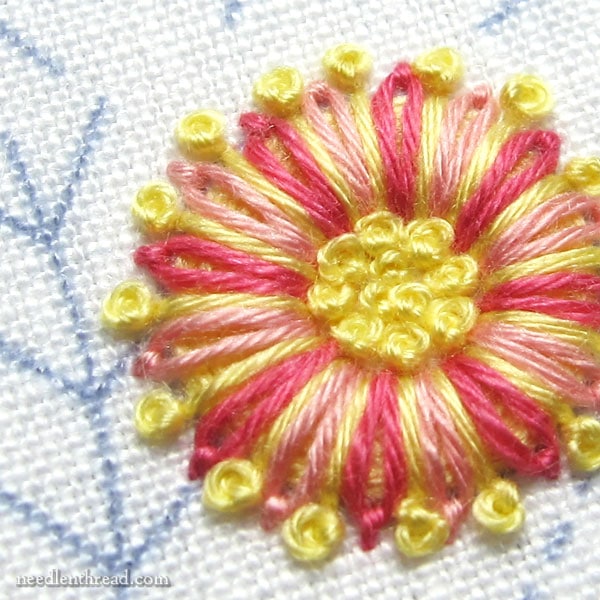
With the texture taken care of on the outside of the ring, it’s finally time to add a little to the center, by filling it with French knots as well.
If French knots give you trouble, check out my French knot video here – it may help save a lot of your knot problems! If French knots are a real bane for you, perhaps a Colonial knot would work better? You can find a tutorial for Colonial knots here.
That’s it, my friends! A fun and cheery way to lift up the daisy stitch ring a little bit!
If you’d like to explore more Stitch Fun tutorials, you’ll find a whole list of them here.
Happy Monday!